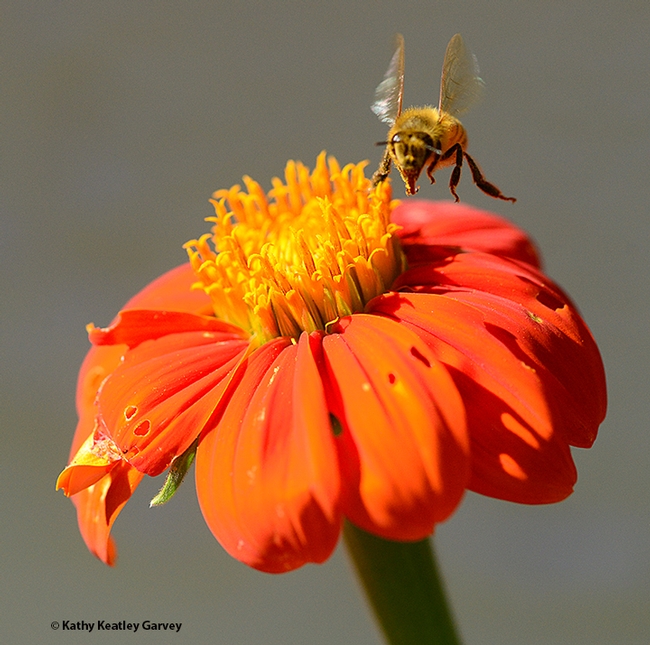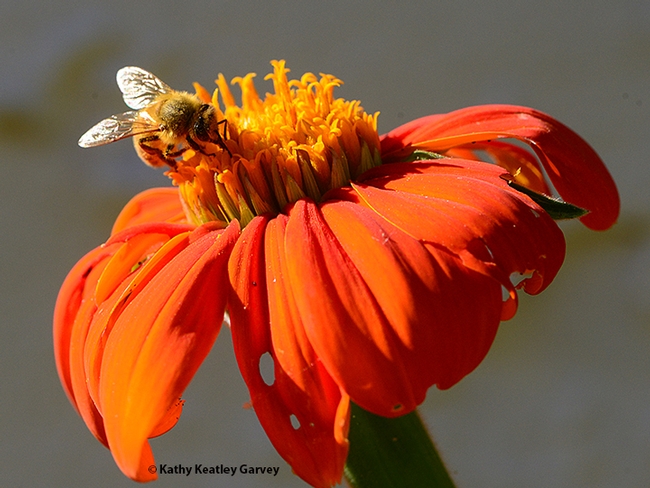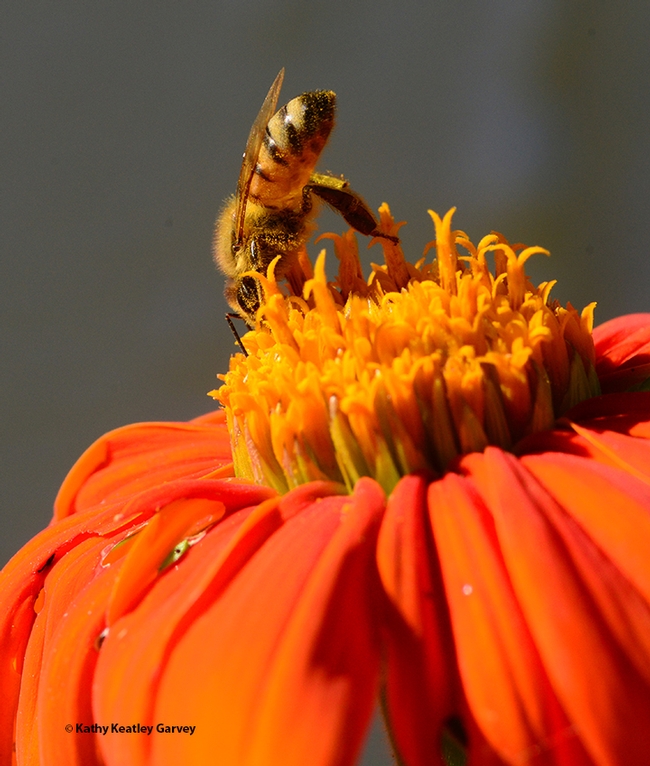The honey bees love it.
So do the long-horned bees, bumble bees, carpenter bees, European paper wasps, syrphid flies, butterflies, blister beetles, spotted cucumber beetles, crab spiders, praying mantids, and assorted other insects.
The Mexican sunflower (Tithonia rotundifolia) blooming in gardens around California and beyond is a delight to see.
A native of Mexico and Central America and an annual, it's a member of the sunflower family Asteraceae. In our yard in Vacaville, Calif, it blooms from May or early June through October and November--just in time for the migrating monarchs that pass through on their way to their overwintering sites along coastal California.
But for now, it belongs to the honey bees and the long-horned bees, such as Melissodes agilis.
We encountered this lone honey bee last week--a single bee in need of nectar but not in need of a dive-bombing by the male territorial Melissodes agilis.
The last image, of her in an upside-down stance and peering through the petals, indicates this bee is not about to let her guard down.
Not now.
Want to learn about honey bees? Be sure to read Norman Gary's book, The Honey Bee Hobbyist: The Care and Keeping of Bees. Gary, a UC Davis emeritus professor of entomology, has kept bees for more than seven decades and has held or holds the titles of teacher, scientist, researcher, author, bee wrangler and musician. Check out his website.
Also read the UC book, California Bees and Blooms: A Guide for Gardeners and Naturalists, by Gordon Frankie of UC Berkeley, (the late) Robbin Thorp of UC Davis, and Rollin Coville and Barbara Ertter, both affiliated with UC Berkeley.
Attached Images:

A honey bee heads toward a Mexican sunflower, Tithonia rotundifolia, in Vacaville, Calif. (Photo by Kathy Keatley Garvey)

Ah, this Mexican sunflower is all mine. (Photo by Kathy Keatley Garvey)

It pays to keep a lookout while you're foraging on the ever-popular Mexican sunflower, genus Tithonia. (Photo by Kathy Keatley Garvey)